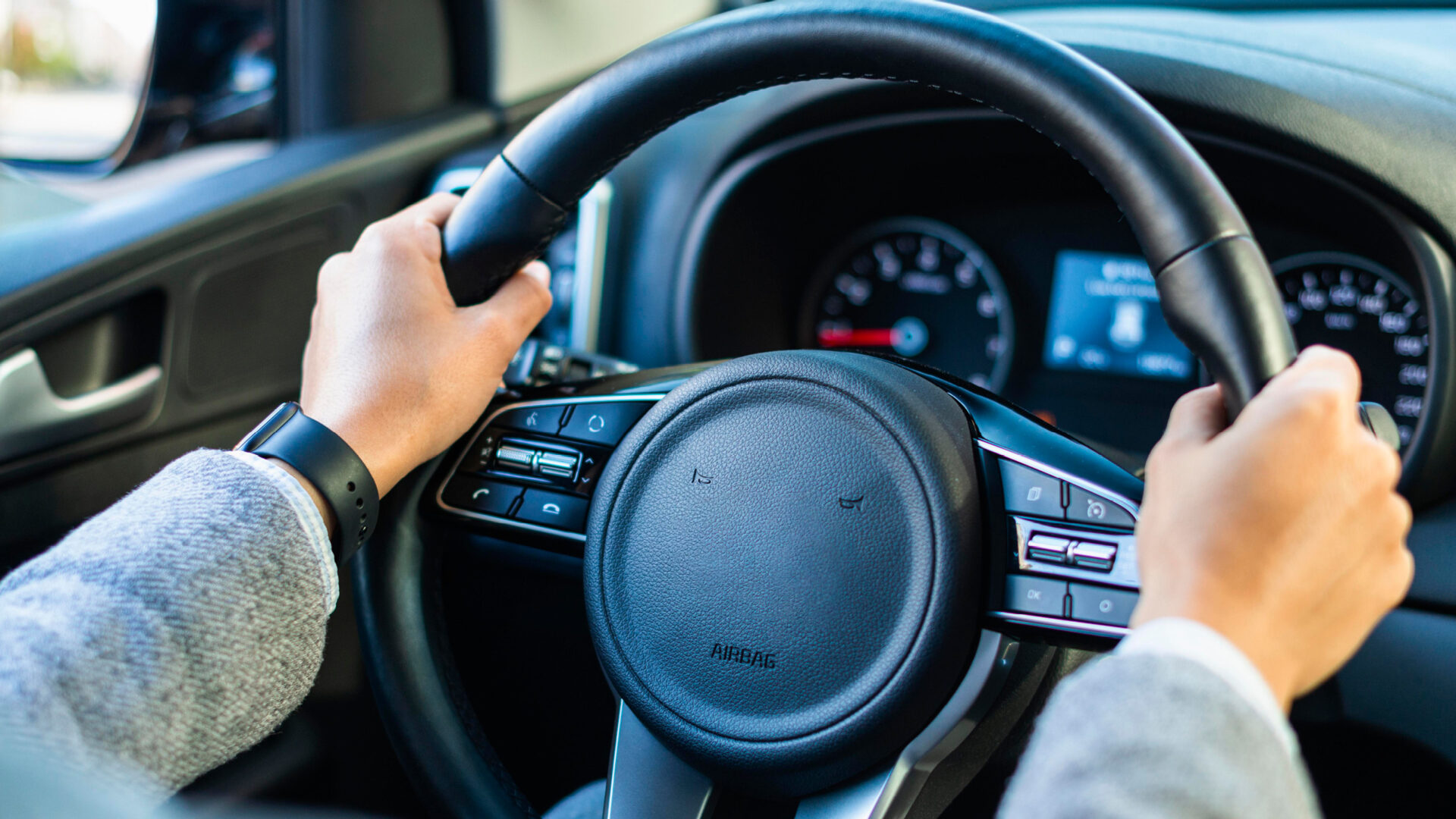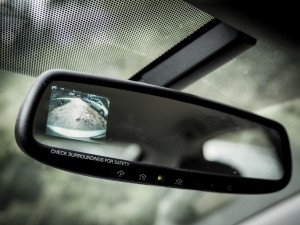
No matter how long you’ve been behind the wheel, your driving skills have no effect on the way other motorists behave. From first-time drivers to people chatting on the phone while behind the wheel, the biggest hazards to your safety on the road can be found behind the wheel of other vehicles.

Image © Depositphotos.com/Brad Calkins
Check your mirrors frequently to stay aware of potential accidents and hazards.
While today’s roads are safer than ever before, accidents still happen and thousands of people are injured or killed on the road every year. Beyond following the rules of the road and being aware of your surroundings, one of the best ways to stay safe on public roads is by practicing defensive driving.
WHAT IS DEFENSIVE DRIVING?
There’s more to being a competent driver than simply understanding how to drive a car and being aware of the road rules. Defensive driving involves anticipating major risks and potential hazards and driving in a way that keeps you and your passengers safe and secure based on the road conditions.
Defensive driving ranges from staying aware of conditions several cars ahead of you to making frequent stops on long trips to relax and regain alertness. It also includes paying attention to the way vehicles around you behave and spotting potential risks and hazards before they’re able to occur.
WHY PRACTICE DEFENSIVE DRIVING?
Defensive driving has several benefits. Being able to spot hazards makes you a more confident driver and prevents you from panicking behind the wheel if an accident or dangerous situation occurs. This confidence helps you learn when to change the way you drive to better suit the current traffic, road and weather conditions.
Beyond increasing your confidence as a driver, being able to drive defensively leads to significantly fewer serious accidents. When you’re aware of the road conditions, a potentially fatal accident can be turned into a minor crash by early braking and the right response.
7 WAYS TO DRIVE MORE DEFENSIVELY
Although road accidents are rare, it pays to be prepared. These seven driving tactics will make you more aware of your surroundings, more prepared to respond to any changes in road conditions or potential accidents and more capable of staying fully in control of your vehicle when the unpredictable occurs.
LONG TRIP? PULL OVER TO TAKE A BREAK
Feeling sleepy? Driving tired has a severe effect on your ability to react to changes in road conditions and the behaviour of other drivers. In fact, some researchers believe that driving tired is as big of a hazard to your safety as driving while intoxicated.
If you’re driving a long way and feel fatigued, pull over at the next stop and step out of your car for some fresh air. If you’re feeling worn down, pull into the next petrol station for a coffee and snack to regain some energy before you continue driving.

Image © catherinehutton.com
A short break might cost you 15-20 minutes and slow down your arrival time, but it’s a far better solution than driving tired and significantly increasing your risk of being involved in an accident.
DRIVE AT A RESPONSIBLE SPEED
The faster you drive, the bigger the risk of crashing. While it might seem perfectly safe to exceed the speed limit, breaking the speed limit by just 10 miles per hour is enough to increase your risk of being involved in an accident by 50 per cent.
Drive at a speed that’s compliant with the law and suitable for the conditions of your journey. Even if you drive within the speed limit, weather factors like rain and snow can make legal speeds less than ideal.
WATCH THE TRAFFIC AROUND YOU
You might be an expert driver, but the people driving around you often aren’t. Keep yourself as safe as possible by paying attention not just to the traffic in front of you, but the cars behind you, beside you and the cars passing you.
Accidents come from all angles, and only paying attention to the car in front of you means that you may not be aware of all the potential hazards. Check your mirrors often to stay aware of hazards behind you and to your sides.
As well as checking your mirrors, make sure there aren’t potential hazards close to your car that are hidden by your A-pillar. Learn your vehicle’s blind spots and look around pillars and other obstacles so that you’re fully aware of your surroundings.
CHECK THE ROAD SEVERAL CARS AHEAD
Just like hazards can come from the front, the rear and the side of your vehicle, they can also come from places other than immediately near you. Sometimes an accident waiting to happen could be two, three, four or five cars ahead of your vehicle.
Instead of basing your speed and driving style on the car in front of you, check the road several cars ahead and see how the vehicles ahead of you are driving. A range of hazards – from large trucks to merging lanes may be further ahead.
LOOK IN YOUR MIRRORS FREQUENTLY
It’s important to check your mirrors frequently to spot potential hazards. Speeding vehicles, emergency vehicles and drivers behaving unpredictably can go unnoticed when you only focus on what’s ahead of you.
Check your mirrors several times every minute to make sure you’re a safe distance not just from the cars ahead of you, but from potential hazards to the rear and both sides of your vehicle.
FOLLOW THE THREE SECOND DISTANCE RULE
How closely are you following the car ahead of you? If they stopped suddenly, how long would it take you to respond? Would you be able to brake in time, or are you so close to their vehicle that an accident would be inevitable?
When you’re following another vehicle, make sure it takes you at least three seconds to catch up with them should they make a total stop. At night or in bad weather, give yourself double the stopping time – six seconds – for extra safety.
DRIVE ACCORDING TO THE WEATHER CONDITIONS
The speed limit might be 60 miles per hour, but that doesn’t mean you should drive at or close to the limit. When the weather is bad, the road surface can become slippery and more hazardous than normal, making speed a major hazard.
No matter what the speed limit might be, drive to the road and weather conditions to give yourself more time to respond to potential accidents. Wet roads and excess speed can lead to aquaplaning and skidding – two major road safety hazards.
MAKE PRACTICING DEFENSIVE DRIVING A HABIT
Defensive driving might seem unnecessary at first, but over time it will become a natural part of your road safety routine. Practice the seven strategies in this guide the next time you’re behind the wheel to become a safer, more confident driver.
CONTACT US TODAY TO LEARN MORE
Maintenance, repairs and other automotive expenses can quickly add up. If you’re interested in making the costs of car ownership more predictable with an extended car warranty, contact us today on 0800 001 4990 or enter your registration in the box above.

